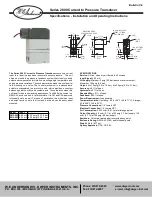
9) Solder the MIC cable to CN5. Use the yellow connector. Note: The square pad (on the
right) is GND, the round pad is the MIC pad. They are routed to the MIC pad and the GND
pad of Main board CN4 respectively.
10) Assemble the SETUP switch which is on the PCB back.
Now, the DDS Unit is ready. You may test this assembly separately.
Apply 12V to CN1 to test the DDS Unit.
Supply 12V DC to +12V and GND. C to +12V pin, - to GND.
Never connect the
wrong polarity!
Power supply range is 10.5 - 13.6V.
If there isn
’
t any display after adjusting VR1, please check the LCD cable. The cable may
only be half way into the connector. Insert the cable properly. For the first test the DDS
works best at the lowest frequency of BAND 1 (3.000.000), LSB, VFO A.
Press MOD, the mode changes, press A/B, the VFOs switch, press V/M, VFO mode is
switched to the memory, press MEM, the frequency is ready to save to the memory. Turn
TUNE, the frequency changes. Press the TUNE knob, the tuning rate changes. All the
functions work! Let's check the DDS output.
Check the DDS output with a frequency meter. Connect the frequency probe to CN4, the
Summary of Contents for TJ2B
Page 3: ...Cables for internal connections Components package...
Page 5: ...Pre assembled Miniature Transformers Packed in a separate plastic bag Brass Stand Off Parts...
Page 10: ...How to insert the LCD Cable Never bend the cable end soldered to the LCD...
Page 12: ...Now solder the 7 wire cable...
Page 35: ...50 ohm cable and MIC cable are connected How the cable is soldered...
















































